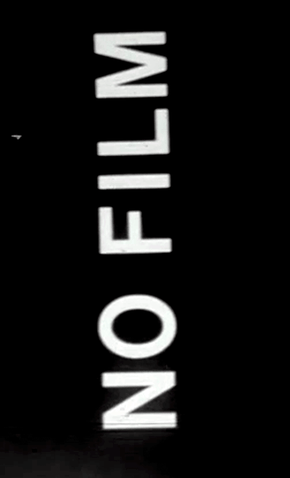
‘In 1964, the film lab “Wien Film” refused to print 6/64 Mama und Papa. When Kurt Kren handed in the original, the film grader said with an undertone of sympathy that, given the many cuts, one would not be able to make out anything, anyway. His worries were groundless: when Kren came to pick up the print, some people with flushed faces left the projection room, telling him to get out and never to come back again. A few months later, a similar scene took place at “Listo”, where 9/64 O Tannenbaum was not accepted. Kren ultimately found a place that took his films, based on actions by Otto Muehl and Guenter Brus: a house on Peter Kaiser Gasse in Jedlersdorf, a neighborhood in the East of Vienna, on the other side of the river Danube. There, in the 21st district, on the most remote outskirts of town, films were developed and printed in self-made contraptions reminiscent of washing-machine drums. The man who ran the business single-handedly intimated that he was used to explicit images owing to customers from the blue movie scene. The facts that the credits in a few Kren works from those days are slightly out of place and that the name “Kren” next to the copyright sign goes beyond the edge of the frame can be explained in this context. On request, credits were in-house productions, but they were made with a camera that had no view finder, for which reason slipped boards were none too unusual. There were no objections to the films’ content, formal and creative issues played a secondary role.
‘Be that as it may – the “© Kren” jutting out over the frame can easily be understood as a metaphor of the avant-garde and a harbinger of cinema outside the screen – Expanded Cinema. It is precisely during the “Jedlersdorf period” in his oeuvre that Kurt Kren demonstrates some of its best knacks to modern cinematography.
‘In his essay “On the question of form” dating from 1912, Wassily Kandinsky proclaimed that the “Great Abstraction” and “Great Realism” were equivalent. Kandinsky’s text marks the acme of a development in Western art that started in the late Middle Ages and can be followed stringently ever since the renaissance. It is a development that oscillates between two polarities: on the one hand, there is a type of painting that sets aspects of form and composition aside to depict nature as accurately as possible. On the other hand, there is the opposite type of painting that strives for the strict adherence to formal principles in all its idealizing styles. This longing for a lofty reproduction of reality, which concurrently seeks to express that which is hidden behind the appearances, unites a great variety of styles and artists, such as idealizing Classicism, Gauguin, Expressionism and Mondrian’s extreme formalization of the phenomenal world along the same lines of visual development. Kandinsky deals with what he calls the other genealogy of modern art which is based on “realistic” art striving to depict everything true to nature. However, when it turns away from space to represent the moment as we perceive it, it introduces the component of time into the structure of the picture, something reflected in the light application of paint, in sketchy freehand drawings: objects become volatile. The imminent renunciation of form found in Naturalism (the reproduction of phenomena the way they appear) eventually leads – via Impressionism – to a two-pronged approach ending in the disintegration of form: in Kandinsky’s free abstraction and in the extreme realism of the ready-made and comparable collages of objects from the workshops of the Dadaists. The Great Abstraction foregoes the mediation of the perceptual world and represents the creative media themselves; the Great Realism foregoes representation, substituting for it the object itself. To put it in a nutshell, the names Kandinsky, Mondrian and Marcel Duchamp map out the terrain wherein twentieth century art is located. As we all know, the aesthetic issues at stake in the conflicts between these positions in the visual arts also come to bear on cinematography with some delay. Their impact is all the more tremendous, and Kurt Kren’s contribution in this context is no less than outstanding, from a global perspective, too.
‘Guenter Brus and Otto Muehl: they depart from the easel painting and use the human body as their expressive central means in art. This common trait tends to obscure the fundamental differences between their actions. On the one hand, Brus and his grandiose pathos belong to the tradition of Expressionism. The way in which he uses paint gives it a continuing central function as a link between body, surrounding space and delimiting surfaces. On the other hand, Muehl is the Dadaist among the Actionists. His version of realism does not need the expressively fraught double bottom of a special world of signs (as in Brus’s surgical gauze, scalpels, scissors, razor blades and tacks). Muehl’s staged realities are still lives of paint, refuse and food in motion, spirited, and devoid of symbolic or allegorical allusions. Where Brus arranges a mise-en-scene of creatures suffering, Muehl is looking for fun.
‘Kurt Kren enters the picture amidst these two contrasting Actionist programs – and he, too, reacts in strikingly different ways. Ever since his second film – 2/60 48 Kopfe aus dem Szondi-Test – Kren had organized his material according to serial rules.*1* He counteracted the mimetic abundance of the film with brittle mathematical principles (the length of a take was determined from the sum total of the two preceding takes: 1, 2, 3, 5, 8, 13, 21, 34 frames). All his early films were edited in the camera by means of the single frame mechanism. Kren lastingly made his mark in the history of cinematography when he developed his flash-editing technique from his fifth film onward – 5/62 Fenstergucker, Abfall, etc. is characterized by cuts down to single frames. Here, too, the sequence was determined by serial patterns laid down in scores.
‘The serial flash editing technique is what Kren uses to create a contrast to “Realist” Muehl’s actions. Unlike single-frame editing in the camera, real editing enables a much more appropriate option to formalize within the sequence of images. A single-frame process in nature, as shown in 3/60 Baeume im Herbst, has no repetitions; each frame holds a new view in store. In the first action he filmed, 6/64 Papa und Mama, Kren’s editing leads to many interlocking continuous shots; central takes recur like a leitmotif, circular motion and networking can be observed throughout the film. Kren painstakingly weaves the fury in front of his camera lens into dense geometrical figures. Shot/countershot sequences alternate, jumping back and forth between single (!) frames, they turn the Actionist turmoil into ornaments, rigid geometrical patterns, the equivalent in time to what Mondrian used to distill on canvas in space. Then comes Kren’s first film with Guenter Brus 8/64 Ana – Aktion Brus. The expressive style Kren is suddenly confronted with makes him depart from seriality and flash editing. His response is the “Great Abstraction.” Free gestural photography corresponds to Brus’s pathos; Kren pumps images of Tachist disintegration onto the film strip. While flash editing had made Muehl’s actions rage, the repetitive qualities had ensured that the “moving ornament” was still legible. The single-frame process Kren uses to record Brus’s action as if writing with his camera makes the image almost less than discernible; 10b/65 Silber – Aktion Brus floats even more freely in the pre-representational haze of gestural traces. When Kren steadies his camera a little more for a change, he is less interested in the action than in the abstract traces left by the act of painting – the splashes of paint on the studio walls. Where Dadaist Muehl celebrates Naturalism taken to extremes, Kren responds by strategies of concentration as found in Mondrian, and Expressionism, for that matter. Confronted with Expressionism as continued in Brus’s actions, Kren resorts to the “Great Abstraction'”, clearing the board of all signs fraught with meaning. However, there are two exceptions to this rule: 9/64 O Tannenbaum featuring Muehl is characterized by the use of the single frame mechanism and a static camera; 10/65 Selbstverstuemmelung shows Brus in relatively long takes following an A-B-C-B-C-D-C-D-E-etc. pattern. These two films do without applying an aesthetic opposite in terms of structure, and as a result, they are comparatively documentary in character.
‘The dialogue with Modernism, which Kren had an important share in shaping, can be tracked down in most of his 49 films. Not even Dadaist realism is missing in 18/68 Venecia kaputt, in 27/71 Auf der Pfaueninsel, in 29/73 Ready-made, in his expanded movies. But let’s move on to Kren’s latest film, thirty years after he started.
‘In 1995 Kurt Kren turned the centenary of the cinema into a commemorative year. The office “hundertjahrekino” commissioned him to make a trailer which he gave the title tausendjahrekino.*2* For several weeks, Kren filmed tourists in the square in front of St. Stephen’s in Vienna while they were taking pictures of the cathedral or recording it on video. He used frequencies of 2, 4 and 8 frames per second and touched the limits of his lens: maximum focal length (66 mm) and minimum distance (1.2 meters). The takes are usually two to four frames long, they do not follow any fixed rule. The soundtrack is a brief sequence from Peter Lorre’s movie Der Verlorene (FRG 1951) in which a drunkard recognizes a killer protected by the Nazis, accosts him and repeats over and over again: “We’ve met before, I don’t know where, but we’ve met before. . . ” “When the end of the film draws near, the same voice is heard again over the din of an air alert: ‘Everybody down to the heroes’ shelter, everybody die a hero. . . ‘. Kren associates the anniversary of cinematography with the Third Reich, which was to last a thousand years. ‘One Hundred Years of Cinema’ also means images ruling for one hundred years, images which have lost there referentiality and come to dominate reality. The question is whether the tourists will actually ‘have come to know’ St. Stephen’s Cathedral. When the voice on the sound track sends everybody down to the heroes’ shelter, Kren pans up St. Stephen’s, his camera shaking. At the end of the film he seems to seek the lost reality of the cathedral, but it has been bombed by the images.”*3* The technical-formal givens mentioned above arouse curiosity beyond such an interpretation. Tourists taking pictures of cathedrals and similarly large structures may inevitably move the onlooker to ask: “How do you get such a big building into such a small thing?” The trivial technical reply would be: infinity focusing and the longest focal length possible – a wide-angle lens. As regards the focal length of the cameras used, Kren positions himself (as said above) on the opposite end of the scale from the tourists: maximum focal length and minimum distance. But that is not the only point. Instead of seeking clarity by keeping his distance (infinity focusing), thus concerning himself with mimesis, he gets as close to reality as his lens allows him to. The low frequency of frames he works with stipulate long exposure times: in combination with a hand-held camera and telelens, this leads to rather blurred images. Again, we have arrived at the figure of handwriting on the way to Kandinsky’s “Great Abstraction,” and again, Kren wants to visualize the other side of the appearances.
‘What about the people whose outlines haunt Kren’s hazy shots? They all look at the cathedral through their view finders, at the sculptures in the round adorning its facade. These sculptures in the round of human bodies standing freely are precisely the objects via which perceptual reality began to enter the realm of art in the late Middle Ages. These sculptures were the first formulations of a program that was ultimately to be implemented by the Renaissance, and its visual echo is still refracted by every camera lens of this world. In tausendjahrekino, we witness a meeting with the “Lucy” of the photo, film and video generation: these Gothic fossils are to photographic mimesis what the first mother of humankind is to anthropologists. The only difference is that the participants in this family reunion on St. Stephen’s Square are not aware of the fact that they are related. “We’ve met before, I don’t know where, but we’ve met before… ” For Kren, this is tausendjahremimesis, and no end to it.’ — Peter Tscherkassky
___
Stills




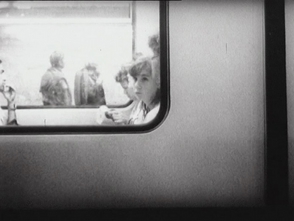
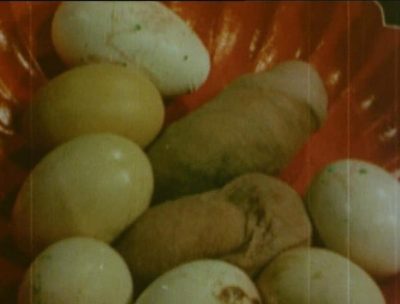
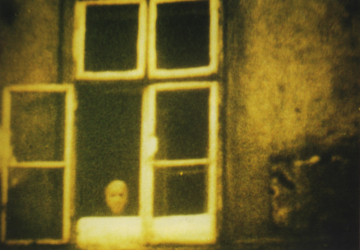
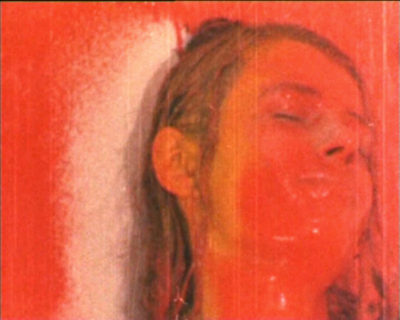
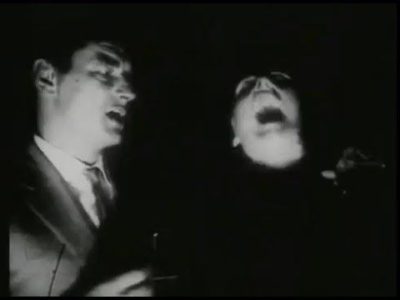
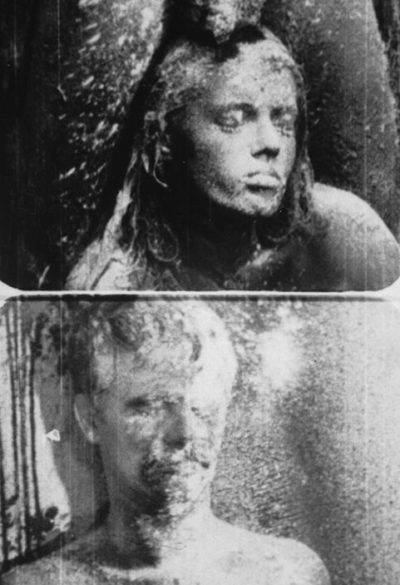
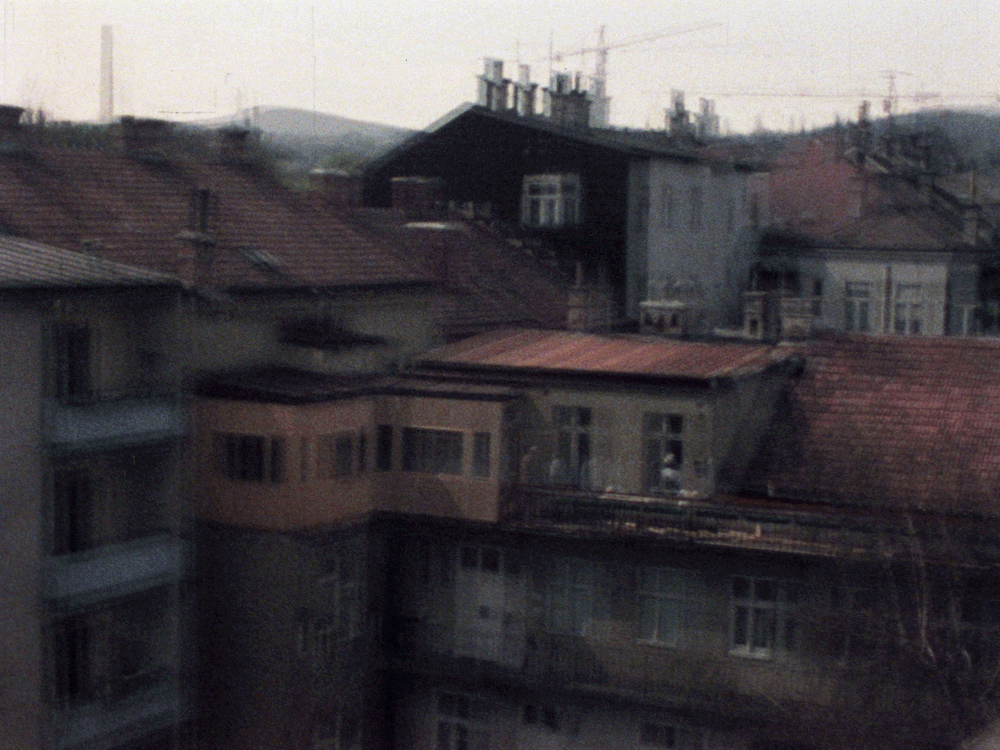
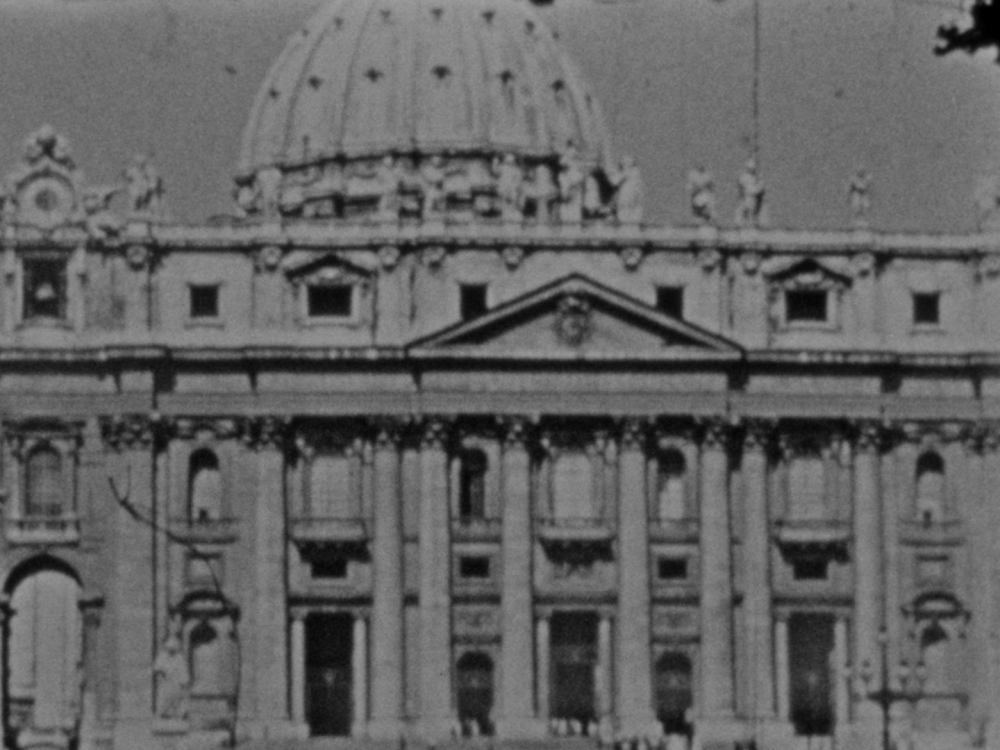

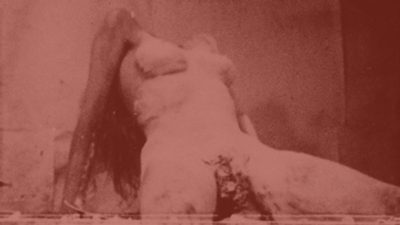



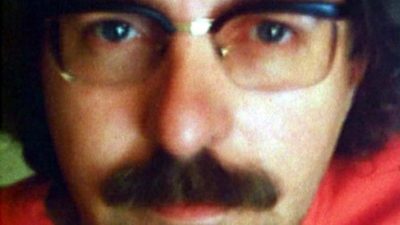

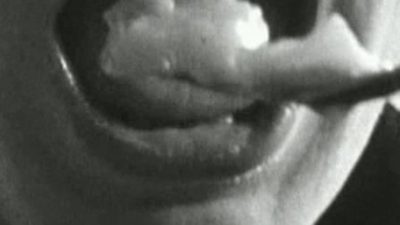


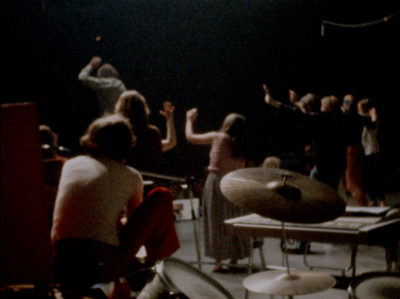
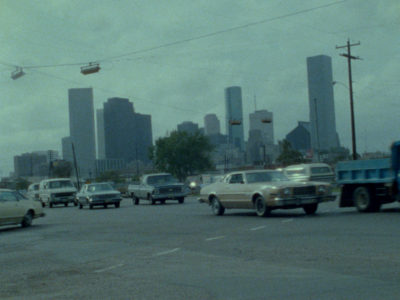


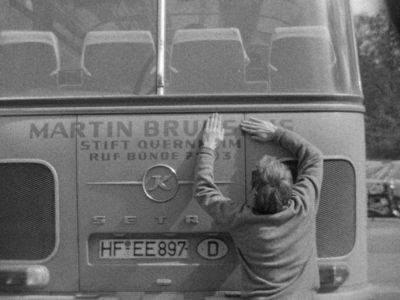


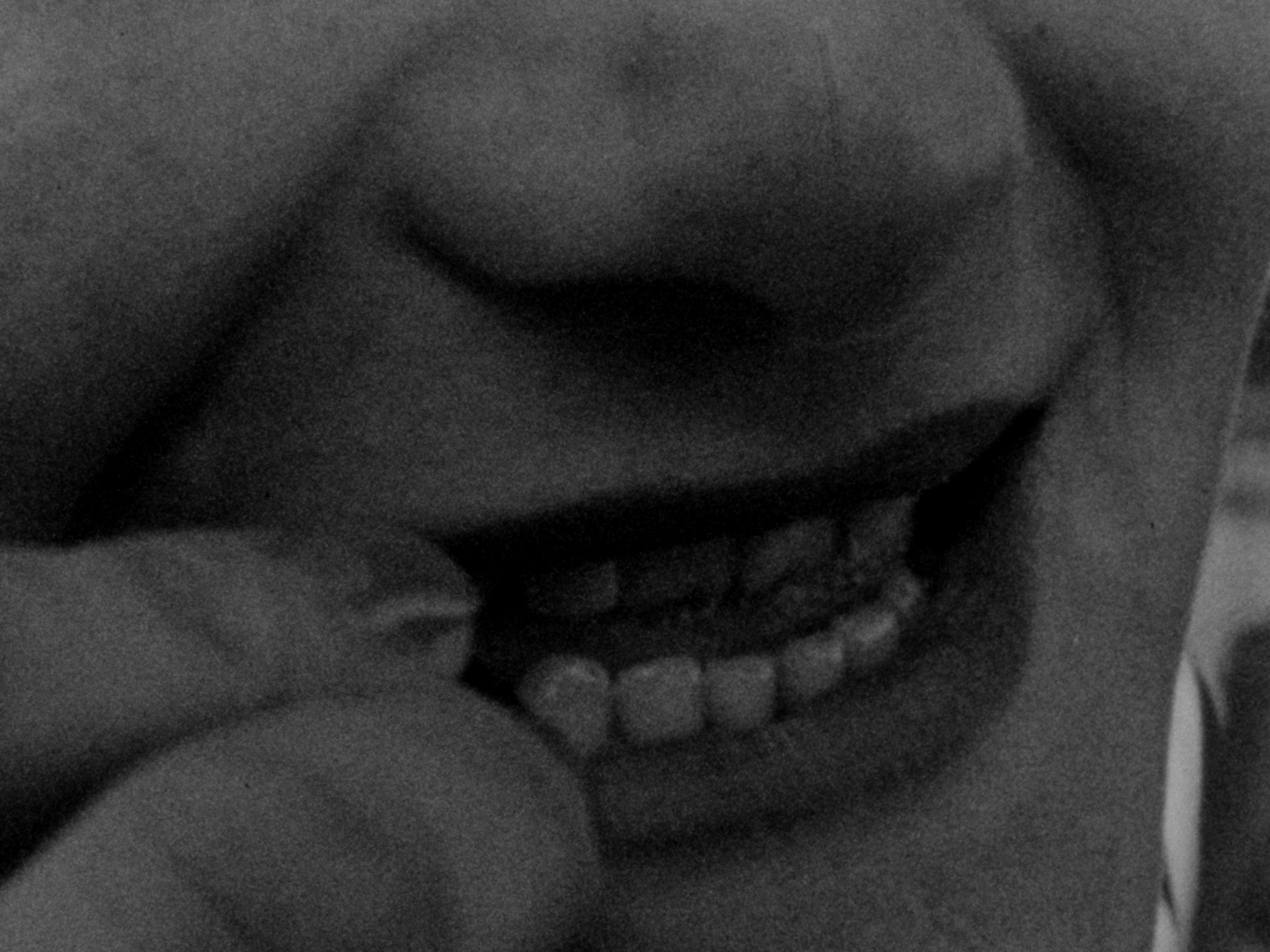
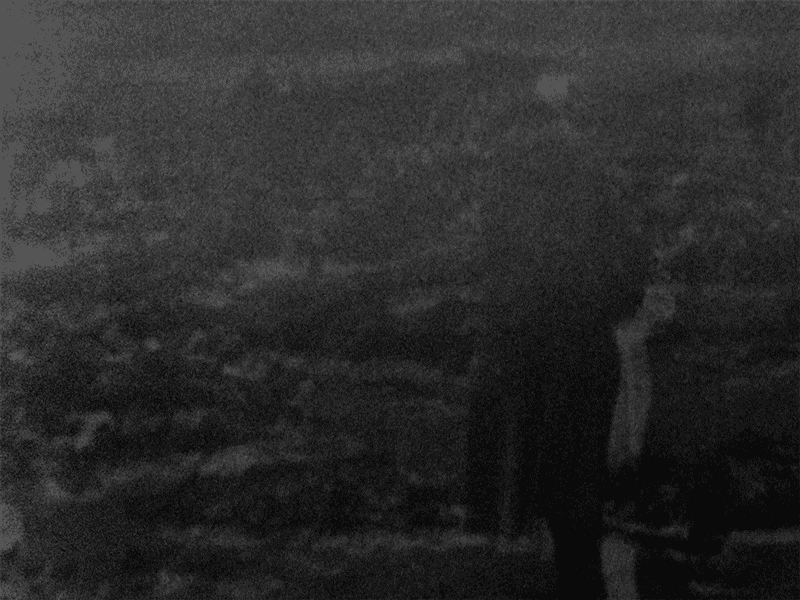
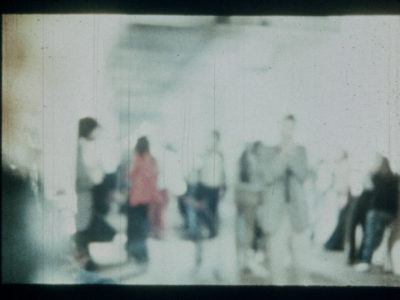

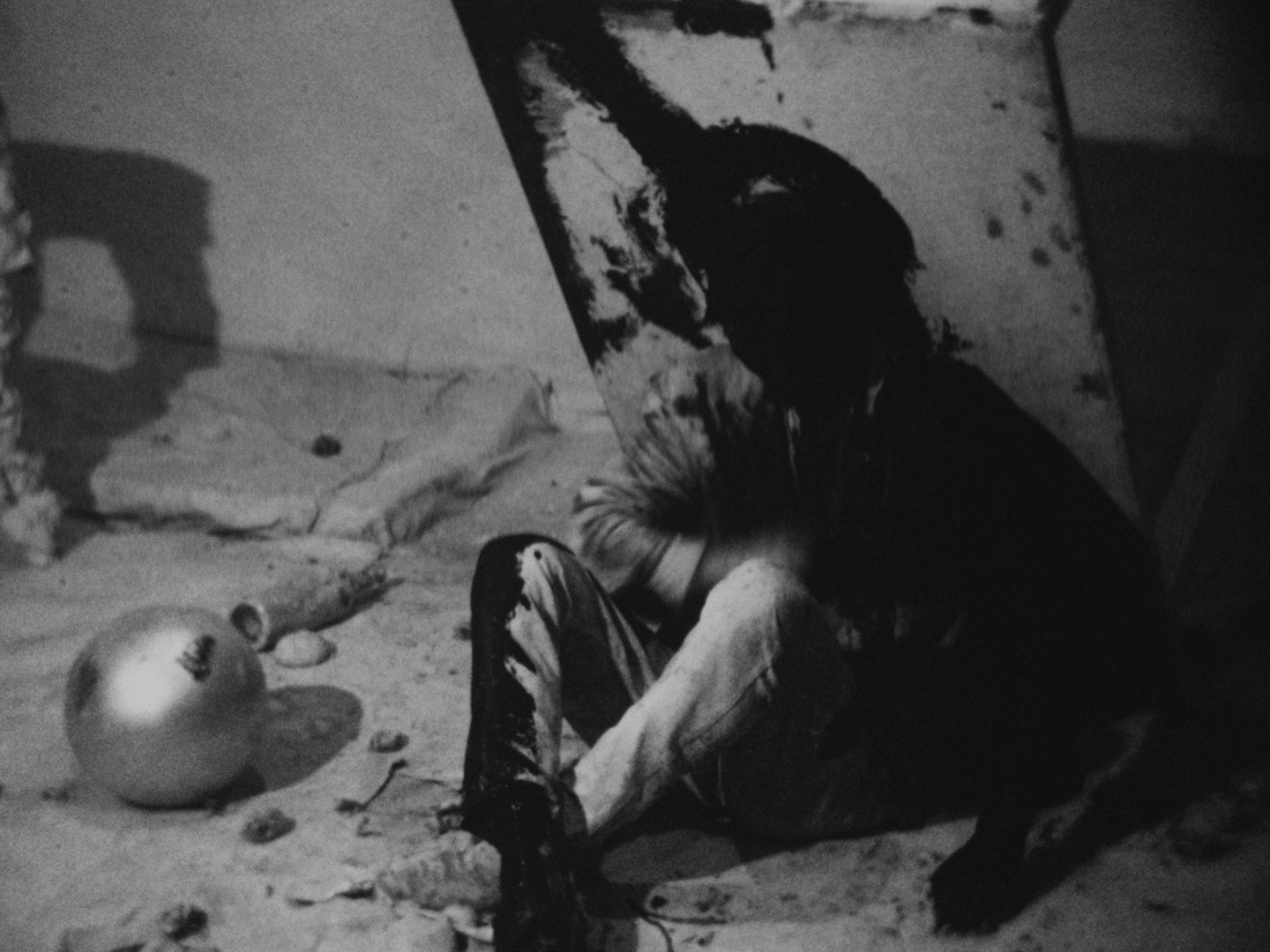
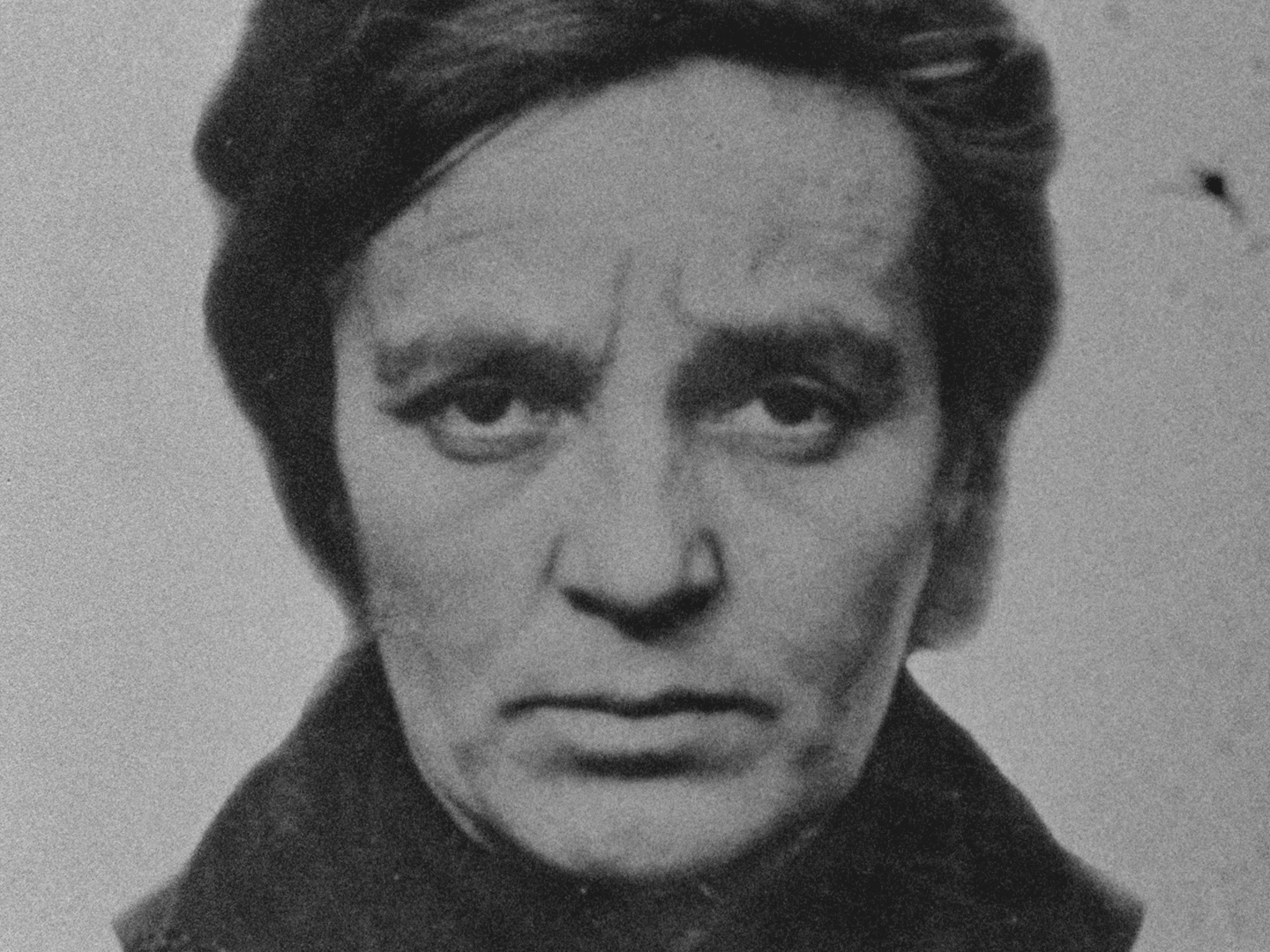
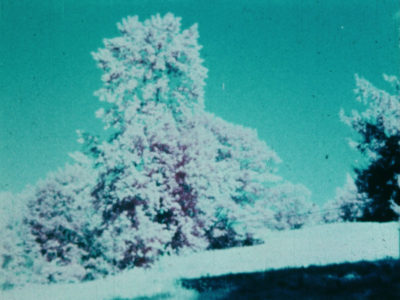


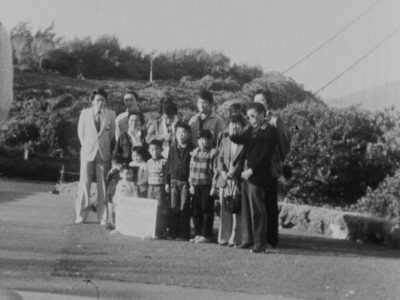

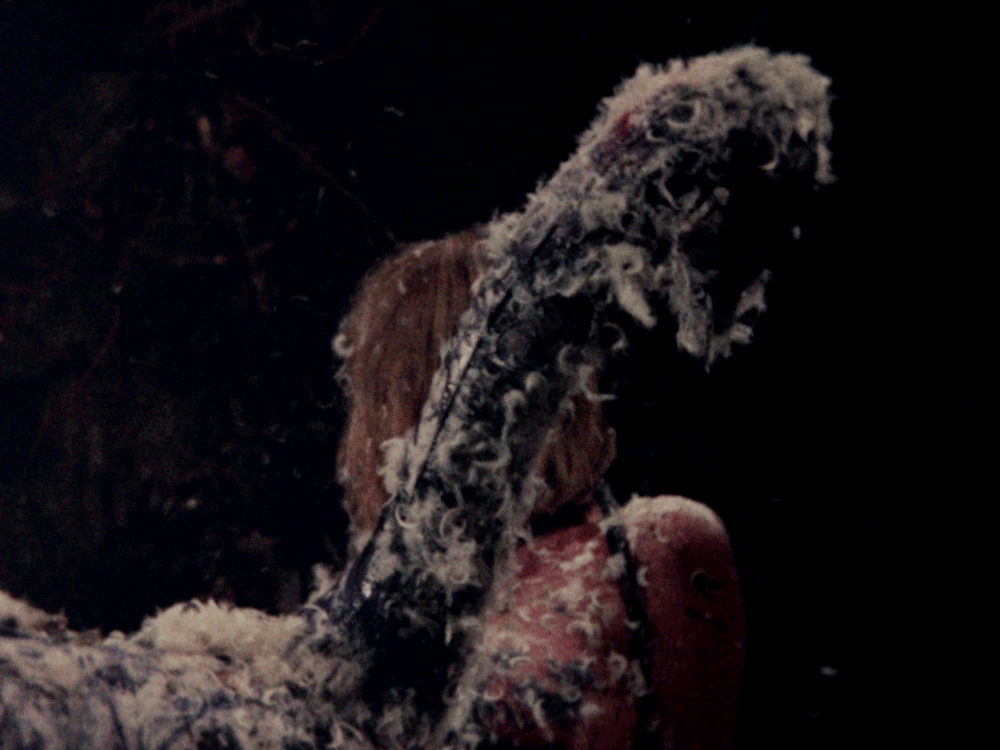
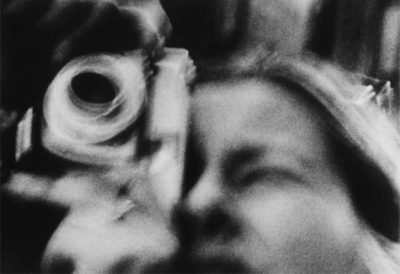
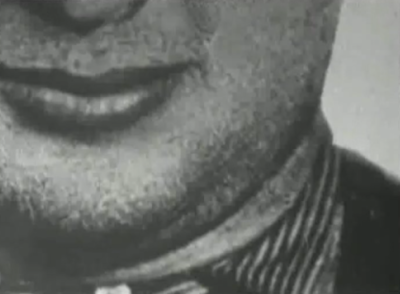
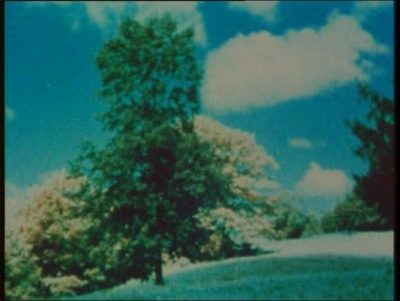
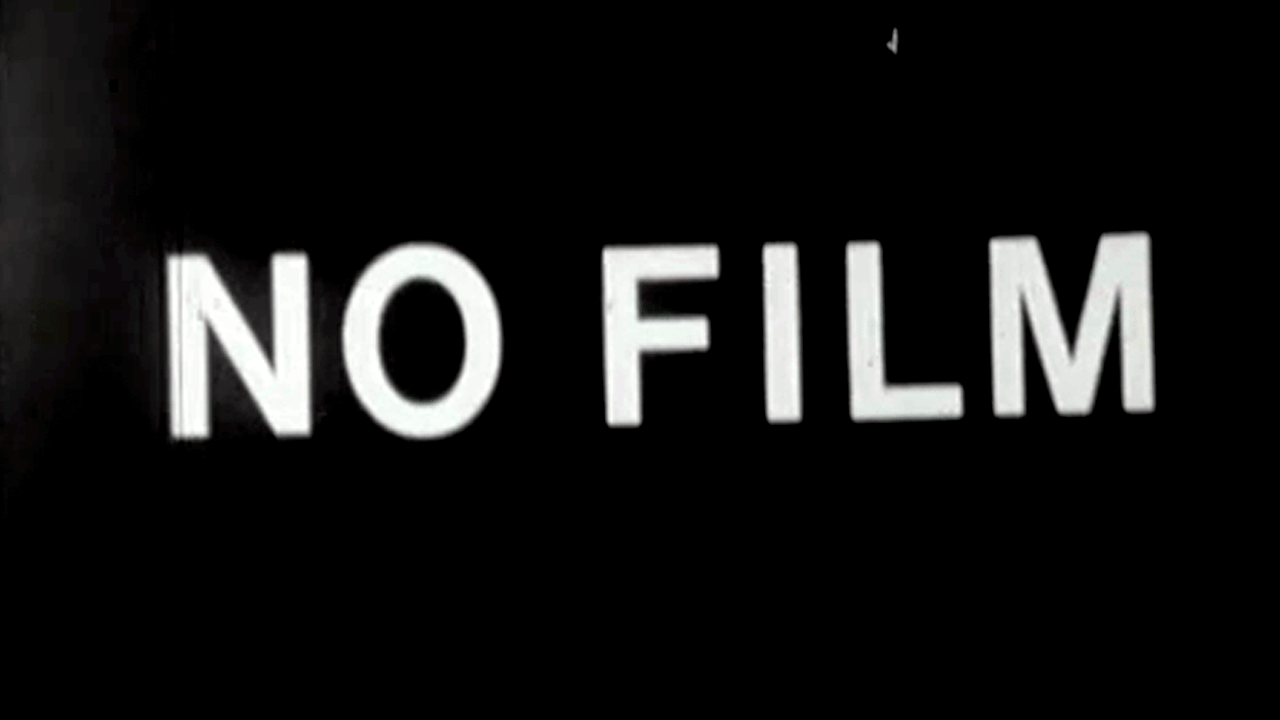

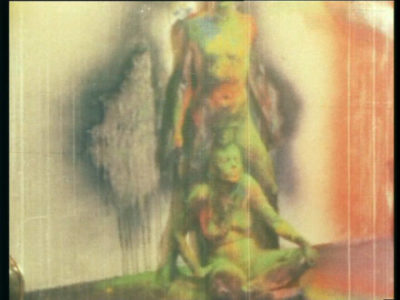
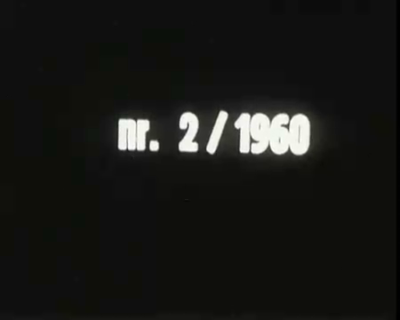
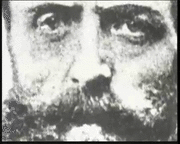

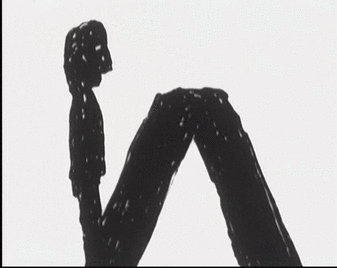

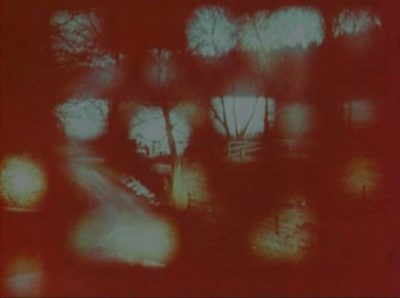












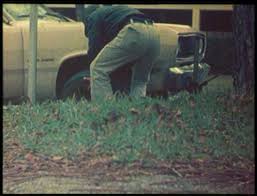


___
Further
Kurt Kren Site
Kurt Kren @ LIght Cone
Kurt Kren @ IMDb
Kurt Kren @ The Film-Makers’ Cooperative
Kurt Kren. Action Films
Kurt Kren. Structural Films
kurt Kren @ MUBI
The Archives of Kurt Kren at mumok
Lord of the Frames: Kurt Kren
Book: ‘Kurt Kren: Structural Films’
Kurt Kren @ letterboxd
In Memorandum: Kurt Kren
Haptic Transgression. The Horror of Materiality in Kurt Kren’s Films
The Music of the Image — About Kurt Kren’s Cinema
TRANSGRESSING TRANSGRESSION: Reflections on Filmmaker Kurt Kren
The Old Masters: Kurt Kren
“Sorry! It Had to Be Done!” Radical Actioner Kurt Kren
The Transgressive Films of Kurt Kren
____
Extras
INDEX EDITION 001 – KURT KREN – Action Films (Trailer)
INDEX EDITION 002 – KURT KREN Structural Films (Trailer)
A Sentimental Punk: An Incomplete Kurt Kren Film Retrospective, Megan Hoetger Keynote
Film und mehr. Aus den Archiven von Kurt Kren und Ernst Schmidt jr.
_____
Interview
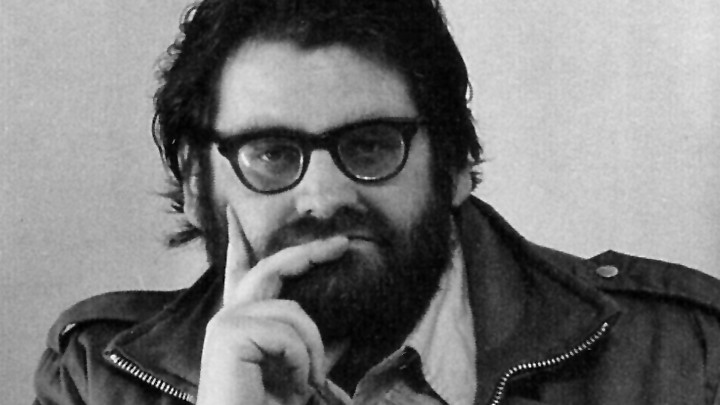
Peter Tscherkassky: In your first film An Experiment with Synthetic Sound (Versuch mit synthetischem Ton) the objects are out of focus and the images look as if they had been created by chance – this has nothing to do with the tradition of avant-garde cinema!
Kurt Kren: Those images had been carefully selected. Chance didn’t enter the game until the film 48 Heads from the Szondi-Test (48 Köpfe aus dem Szondi- Test). I wanted to make a film about human heads, and found the Szondi test. It was divided into six groups of eight different types, all of them numbered. I started playing with these numbers, created a notation for them, and filmed them using a single-frame technique, in other words, turned the mathematical series into images.
PT: What was the audience reception like?
KK: Good! People have always been interested.
PT: Your first and third film have sound, but your later films don’t. Why was this?
KK: I am more visual than audiovisual. In those two cases the sound didn’t quite fit in with the 16 mm film either. Moreover, there is the danger that the image and the sound start competing with each other. The rhythm of the visual has always interested me more. It can produce inner music within the spectators themselves.
PT: Your film 5/62: People Looking Out of the Window, Trash, etc. (5/62: Fenstergucker, Abfall, etc.) is the first one where you use flash editing. Could you tell us something about it?
KK: Flash editing was already familiar to me, I had tried it out before. But this film was the first time it was taken to the level of the individual frame. The rhythm was 1, 2, 3, 5, 8, 13, 21 and 34 frames. It involved a written score, which resembled skyscrapers.
PT: The second phase of your filmography – which really can be divided into different phases – begins after Fenstergucker and includes the Actionist films.
KK: Those films were never intended to be documentaries, although Mühl and Brus hoped they would be. They have made or let others make documentaries afterwards, but as a matter of fact I ruined the whole project at that time, by trying to make a new film myself out of the footage that was shot.
PT: Were the actions public, or staged for you?
KK: Not just for me – there were others shooting them as well. I did, however, have the right to say “Cut!” in order to reload, prime or focus my camera.
PT: One cannot help noticing the absence of Schwarzkogler and Nitsch from your films.
KK: I have later often regretted the fact that I never did anything with Schwarzkogler. But he was even more introverted than Brus. I never saw a single one of his actions. What comes to Nitsch, I had difficulties with the religious aspect of his actions, as I have no relationship with religion myself. I once filmed one of his smaller actions, one that featured Reinhard Priessnitz as well, but the film vanished without a trace. The films brought the actions to larger audiences. We even screened them at the Amerika- Haus in West Berlin, although it had to be kept secret from the officials. This was in 1966 or ‘68. They were screened often in Vienna also. The screenings at Künstlerhaus used to be sold out, with more people still queuing outside.
PT: I return to the Actionist films: 13/ 67: Sinus Beta clearly signals a change in your films. You mix other images with the footage of the actions, although Mühl and Brus are still seen in the long takes crawling and dancing in a childlike manner with the female model. It looks as if you consciously refrained from editing, opting instead to show it how it really…
KK: … was. It took place in the “Destruction in Art” Symposium in London, where I had been invited with my films. I found the editing method much more radical than the actions themselves. I prefer combinations such as Sinus Beta and others like that. The material goes together pretty well.
PT: If you compare this film with your earlier ones, you can see a logical development taking place. This is where it had to go, and this is the logical ending. Then you had those photographs of gestures…
KK: They were from a book on mimicry and gesticulation.
PT: Was that intended to be an ironic comment on the typical and at that point already familiar gestures repeated by the Actionists?
KK: That gets explained by the film itself. We were a loose group, and maintained an outward appearance, but there were significant disagreements inside the group. Moreover, I wanted to make different films, such as 17/68: Grün-rot (17/68: Green-red), the one with the shattered beer bottle. It is also a very erotic film.
PT: Yes, but the eroticism is very aggressive, like in the actions.
KK: I no longer made films with the Actionists, just some photos of Brus, her daughter and an egg, etc. But I had it in mind to make something about defecating, and I happened to meet Brus and Schwarzkogler in a café. Brus asked if I wanted to photograph him taking a crap, and I said no, let’s make a film instead. Combined with eating, drinking and urinating it became 20. September.
PT: It arouses strong reactions even today. People laugh, however…
KK: Yes, but it is quite a particular kind of laughter, like in Pasolini’s Salò. Then in 1968 was the episode with the National Bank of Austria. I used to work there, but I was never welcome. My father had arranged the position, they owed him that much, because the Wiener Giro- und Kassenverein had sacked him during the Nazi period. I was a black sheep from the very beginning, but I had the status of an official and therefore couldn’t be dismissed.
When I returned from my first trip to America I though I would manage somehow, and let them know that I would quit by the end of the year. After a while, in June, the “Art and Revolution” event, or the so-called university outrage, took place, and made the headlines in the Blauer Montag. My name was also mentioned in the headlines, along with citations from the Süddeutsche Zeitung of “girls from good families” running out from the theatre in order to throw up as a reaction to 20. September. The film was screened in Munich then. On Wednesday I was called into the department of personnel administration and given the notice, saying that I have been dismissed immediately. They would pay may salary until the end of the year, though. I should have withdrawn my own application to leave and sue them, that would certainly have earned me an early retirement with full pension, but I just wanted to get out.
I turned on my heels and walked out of the bank. But after all it was a job where I could remain myself. During that time I wrote my scores, and also edited Mom and Dad (Mama und Papa) and Leda and the Swan (Leda und der Schwan). In the evenings I would return from work and brush the dust of the bank off my clothes. It was quite something else than being a museum attendant in Houston… and they had good food at the bank, too. But I thought: I will make it, somehow!
The problem is that nobody buys films – you can’t hang them on your walls as status symbols. We did, however, make small boxes covered with serigraphs together with the painter Wolfgang Ernst. They contained serigraphs of my scores, some of my photographs and one Super-8 print of one of my films each. We sold them for 150 Deutsche Marks from 1971 onwards. I heard one was auctioned at Düsseldorf recently for 1800 Marks…
PT: When did you move to the United States for real?
KK: In 1978, from Munich. I had sent a card with a picture of the heads from the Szondi-Test to about a thousand addresses. I received some replies, and criss-crossed across the United States. Just before I was to depart an event entitled “Film and Sexuality” took place. The police raided it and confiscated the films, including my film Cartoon: Balzac and the Eye of God (Zeichenfilm oder Balzac und das Auge Gottes). The public prosecutor described the film for pages and pages… although it runs only for a couple of seconds. They regarded it as a case of disturbance of public order and an infringement of religious whatever. It doesn’t startle anyone in the USA, however, because they don’t recognise the triangle as the eye of God – even though they have it printed on the dollar bill, right above the pyramid.
In any case, at the time I assumed the police got that one film only, but on the evening before my departure I found out that they had confiscated the entire reel that I was going to screen over there. Despite all this, I got married during my tour, just like in the film American Dream. We then came to Berlin via the German Academic Exchange Service, and after a year got divorced. The film tours went very well, until Reagan became president. His slogan, “Less government, more freedom” didn’t materialise in cinemas any more than it did in the social welfare services. The popular, so-called independent film reigned at the box office, because it brought in bigger audiences.
PT: Your own films of that time are very melancholic.
KK: Yes, my personal situation was completely chaotic and I looked for order through my films. I finished three films during that period, “bad home movies” as I like to call them. I always put in them a story about my cars, too. 40/81 Breakfast in the Grey (40/81 Breakfast im Grauen) was filmed when I spent time in New England with my friends, pulling down old houses ripe for demolition and selling the timber. I was the nail puller; I pulled nails out of boards.
PT: Those images are very important and symbolic to me: crumpling, collapsing houses, something breaking down – it is very touching. The same applies to your film 41/82 Getting Warm: interior shots, America as you only can imagine it, a television in the middle of the room, turned on perpetually, next to an unmade bed with someone lying in it occasionally, sometimes empty… these are very sad images, but ones that still evoke a kind of homesickness. You used to live in your car at the time, didn’t you?
KK: I did. Reaganomics caused many people to lose their homes, their jobs, their cars, forced them to sit on the streets with their families. And me in my car, it was strange… The early winter in New England was quite cold, so I moved through California to Texas, arriving first in Austin. Parts of Getting Warm were shot there.
I would be standing in front of the Texas Employment Commission at seven in the morning; people who needed cheap labour used to call there. I still had my 300 dollar Thunderbird then, and it still looked decent inside, and the only reason I got hired often was that I could take in a couple of passengers. The bottom of the car would often scrape the ground. But eventually even those jobs became hard to find.
PT: How about 44/85 Foot’-age shoot’- out, your last film?
KK: It came about in the following manner: when I returned home in the evenings I was completely exhausted and unable to do anything. I laid down, and could have slept for a day or two, really. But, surprisingly, I received a letter from the San Francisco Cinematheque. They wanted me to make a film to be screened at the Chinese Theatre – with only a two weeks’ warning! A reel of colour negative was included with the invitation.
There I was, wondering what to do next. The stress of the situation made me furious: what are they doing to me, it felt to me almost like being raped. That is what the title of the film came from: a film duel, a footage shootout.
I was really worked up, and then I met Bruce Conner who was covering a story in Houston. “Forget it, they are out of their minds!”, he said, but I couldn’t do that. I just thought, “Shit, I’m going to do it now!” Furiously, I shot the Houston skyline with my camera – that’s all there is in Houston anyway – and then even the film got stuck in the camera. I ripped it out of the camera and shoved it in the express envelope that had come with it, complete with the address of the film laboratory, and mailed it away. They had added the music from Once Upon a Time in the West in ‘Frisco. It was less famous in the States. In Europe it is apparently known by everyone, and I hear they even use it in commercials.
PT: Could you imagine yourself doing teaching work?
KK: I hate school a priori. They only produce new teachers. All the Art Schools, they are just machinery producing new teachers. My advise to students: don’t make films – go straight on the dole!
______________
19 of Kurt Kren’s 49 films
______________
1/57: Versuch mit synthetischem Ton (Test) (1957)
‘Mostly dark, rejecting images which are repeated. A stone wall, the chamber of a revolver which is, at first not recognizable, a close-up of a cactus. The duration of the takes emphasises the photographic character of the pictures, simultaneously with a crackling, brutal sound.’ — Hans Scheugl
the entirety
_______________
3/60: Trees in Autumn (1960)
‘The first embodiment of (a) concept of structural activity in cinema comes in Kren’s Bäume im Herbst, where the camera as a subjective observer is constrained within a systematic or structural procedure, incidentally the precursors of the most structuralist aspect of Michael Snow’s later work. In this film, perception of material relationships in the world is seen to be no more than a product of the structural activity in the work. Art forms experience.’ — Malcolm Le Grice
the entirety
______________
2/60: 48 Heads from the Szondi (Test) (1960)
‘A strictly serial, sequence technique: in various frame-sizes, the 48 portraits from the Szondi Test for “experimental diagnosis of human impulses” are shown in pre-specified lengths.’ — IMDb
the entirety
________________
5/62: People Looking Out Of the Window, Trash etc. (1962)
‘Almost as if entering the picture frame by chance, mute characters lean out of Viennese apartment windows, simply to have a look.’ — letterboxd
the entirety
_______________
8/64: Ana – Aktion Brus (1964)
‘Kren’s first film of an ‘action’ by Gunter Brus. This three-minute film was far more akin to the American-style ‘happening’ in that the content was not particularly extreme. It was built up from items such as broken bicycle parts, a nude model, pieces of furniture, and these elements were then obscured or transformed by having a layer of paint thrown on them.’ — Filmow
the entirety
_______________
11/65: Painting Helga Philipp (1965)
’11/65: BILD HELGA PHILIPP is an optical abstraction of an optical abstraction: Kren has simply intercut filmed movements and sections from an Op painting by Helga Philipp – the result is motion opticals.’ — Stephen Dwoskin
the entirety
______________
10c/65: Brus wünscht euch seine Weihnachten (1965)
‘A kind of home movie made in Brus’ apartment. Brus’ Christmas wishes can be seen on a poster which he painted and which he holds for a short time in front of the camera.’ — letterboxd
the entirety
_______________
10/65: Self-Mutilation (1965)
‘The theme of Self-Mutilation (also referred to as Self-Destruction) is self-explanatory. Kren’s 10th film of 1965 depicts a man covered in white plaster and dough inflicting pain or attempting to operate on himself. The whole thing is very graphic and deeply unpleasant to watch. That, of course, is the intention; to shock the viewer and challenge perceptions.’ — in arte matt
the entirety
_______________
15/67: TV (1967)
‘… Kren’s next important systematic film is TV (1967). In TV, the system is different in kind and pace from that which exists in much of his other work. Instead of operating primarily at the kinetic level, or with rapid perceptual rhythm, this film involves the audience in a conceptual and reflexive process. Five short sequences, each about eight frames long, are all shot from the same viewpoint in a quay-side cafe. They show a window, broken by the silhouettes of objects and people within the cafe and by the passage of people and a ship outside. Each shot containing some small movement is repeated in the film 21 times, in mathematically determined order. They are separated by short, equal sequences of black spacing, except that longer black sequences separate larger phrases of repeats from each other rather like punctuation. The significance does not lie in the mathematical sequences as such, but in how the viewer attempts to decipher the structure.’ — Malcolm Le Grice
the entirety
________________
20/68: Schatzi (1968)
‘Schatzi is the ultimate commentary on the atrocities and torments the soldiers of the Waffen-SS did to human beings, one cannot fictionalize these historical figures and events.’ — Brigitta Burger-Utzer
the entirety
_______________
17/68: Green Red (1968)
‘Kren filmed, in microscopic detail the reflection and refraction of the light in/on a glass bottle. However, the bottle itself (the whole body) is never seen. What is seen is much more the emanations of light from the glass and its clarity.’ — Michael Palm
the entirety
______________
24/70: Western (1970)
‘The alien impression of photography in Western is caused by the use of extreme close-up. Kren’s camera moves across the details of a Vietnam Poster in single frames as if, with trembling closeness and persistent repetition, he wanted to win a new truthfulness from the picture.’ — Hans Hurch
the entirety
______________
28/73: The Exposure(s) (1973)
‘A man’s head is seen in silent close-up using single-frame shooting and time exposure.’ — letterboxd
the entirety
_______________
31/75: Asylum (1975)
‘A meadow, a lake, the silhouette of a hill, trees. 21 days of the same view in Saarland. 21 days with five different cut-outs in a mask before the camera, which finally reveals a complete panorama. The landscape changes with the advancing seasons and becomes slowly delirious in its technical alienation.’ — Claus Philipp.
the entirety
______________
32/76: To W+B (1976)
‘I took a photograph of the view out of the window and had a very large negative made from it, which I fastened to the lens hood attachement in front of the camera. I tried to bring the negative into alignment with the real landscape which I could see through the camera. Then I filmed for months, changing the focus from near to far and then back again.’ — Kurt Kren
the entirety
______________
37/78: Tree Again (1978)
‘At the centre are takes which do not change – a tree in a field in Vermont, U.S.A. Since the film was shot over a period of fifty days, the single frame shots create a storm of pictures.’ — Hans Scheugl
the entirety
_______________
36/78: Rischart (1978)
‘Hans-Peter Hochenrath and Birgit Hein made a documentary film about me for the Saarland Network and wanted me to make a self-portrait. Instead of pointing the camera lens away from myself, I pointed it toward myself. I rewound the film over and over again so that multiple exposures were produced, while I was repeatedly fading in and out.’ — Kurt Kren
the entirety
______________
38/79: Sentimental Punk (1979)
‘It was in San Francisco at a punk festival. I was already high and the air was so thick in the rooms that you could cut it with a knife. I had a photograph camera with me; I stood in a corner of the entrance hall and took 36 pictures on slide film. At home I put the slides into a slide projector. I took out the lens and filmed the slides by filming directly from the projector – using single frames according to a certain plan.’ — Kurt Kren
the entirety
_______________
44/85: Foot’- Age Shoot’- Out (1985)
‘The Battle of the Film Bands was a film showing hosted by the Cinematheque in San Francisco and a group of filmmakers called No Cinema. It was designed as a shoot-out between the organizers’ different concepts for putting together a programme. The filmmaker Marian Wallace sent Kren a film reel with the request to make a film.”I felt somewhat violated. Shortly before the eleventh hour I left and traced the silhouette of Houston and simply wiped it out. I stuck the film in an express enveloppe and sent it off.”‘ — Lightcone
the entirety
*
p.s. Hey. ** David Ehrenstein, Hi. Oh, well, if you don’t know what I mean, I guess that’s for the best. Bon day! ** Sypha, Hi. Yeah, I think I was thinking more of disturbing images, I just didn’t articulate that precisely. Anyway, understood and totally understandable, thanks for answering. ** _Black_Acrylic, Great about the feedback! Really, really good that you’re sharing your writing. And, oh, a novel! A Ben Robinson novel! Now that’s a tasty idea. Yeah, let that happen when it feels like it’s the right time for you. ** Dominik, Hi! Strange I didn’t know about that book, but, weirdly, I never really followed him much back when I was in my heavy serial killer researching days. I don’t know why. Maybe there wasn’t so much out there about him and those murders back then. It was ages ago. Or I just missed the boat. My memory is that the first I heard about him and the murders was via that related Smiths song. Anyway, I’m curious about that book. I’ve seen two Kusama infinity rooms, and I know this isn’t a hugely popular opinion, and I know she doesn’t make then thinking about Instagram, etc., but I do think they look a lot more exciting in people’s phone pix and selfies than they do in real life. Ooh, I do love me some black eyeballs. Love playing the worst guitar solo in history for three hours straight but so adorably that you find it fascinating, G. ** Jeff J, Hi, Jeff. Things going better with you, I hope? Re: the cover: I sent them a bunch of images of works by artists I love, and they immediately latched on that image by Michael. I had no input in the design. They just showed it to me, a fait accompli. Thank you a lot about the reading. Well, both James Turrell and his crater are characters in the novel, believe it or not, so your association there is the opposite of insensitive. I did a Day on the blog about Angela Schanelec. Here. I like her work, yes. Not sure about a favorite. Maybe ‘The Dreamed Path’? The only one I wouldn’t start with, mainly because it’s rather uncharacteristic, is ‘Orly’. I haven’t seen her newest one. ** wolf, Wowwowwowwolf! Dude, so with you on the ‘never again look a gift horse in the eye’ thing. I’d probably go see a Journey concert or something at this moment. Well, probably not, but the absence of live music/sound is kind of the worst thing about all of this shit maybe. I mean not counting the deaths and all of that. Aw, thanks. But I stumbled into whatever wisdom I may have evinced there, trust me. I hope excitement hunts us both down today. Did it? ** liquoredgoat, Hi, D. Yeah, understood, that must put quite a damper on your creativity. If you can find a hiding place in all of that where you can hunker down with a fountain pen or keyboard, I hope you will. Dude, congrats about your fiancee! That’s wonderful, man! Where do you guys want to move to? I’m working on a few things, a maybe new fiction thing, the next film with Zac, an essay I agreed to write and am having the worst time figuring out how to write. Busy body, the usual. Take care, sir. ** Misanthrope, Power chords are the gifts that just keep on giving or whatever. Do try. Their pleasure-giving is virtually guaranteed. Nice that at least your novel gets to travel. You can shoot it to me, but, if needs be said, it’ll take me ages to read it ‘cos I’m slower than molasses’ enfeebled identical twin. The agent hunt is an awful thing, but, yeah, why not? It’s better to have one than not most of the time. ** ae, Aw, thanks! Cool, and thank you about the eventual somehow feast invitation. We’ll sort it. Yes, I love the Krishna restaurant in Culver City. I beelined there since I was pretty young. Fantastic food. And, yeah, the Museum of Jurassic Technology might get my vote as LA’s best thing. Have you lived in LA? I grew up there and have spent most of my life there, as you might know. Big fan. Let me know what happens with the publisher, but it sounds pretty promising. I’m hoping/assuming they’re an adventurous sort of venue. Seriously, I hate summer, or at least its accompanying heat, with a vengeance. Even the wussy winter we’re having here is a boon, even if I never got to bust out my giant coat. Happy day! ** Steve Erickson, Huh, the videos work for me. And they’re Brendan’s original embeds, and he’s based in LA, so it shouldn’t a regional issue. Waterproof your shoes if you can. ** Bex Peyton, Hi, Bex. I’m happy you liked ‘The Devils’. He’s so good. He has a new one coming out ere too long from Infinity Land Press. The book Kiddiepunk put out, ‘Bosun’, is one of his best, I think. Screenwriting! Is the reason your passion is getting sucked out because the school pushes normalisation and the business aspect and stuff like that? I only ask because I’ve had a few screenwriter friends talk about how they had to kind of recover from the film school experience — take/use the skills they learned there but try to erase everything else. I don’t think there’s any reason whatsoever that you need to commit to a single form as an artist. I believe in letting your ideas/excitement choose the right way to realise themselves. And the more areas you have available, the better. But, you know, I’m someone who writes fiction, makes gif works, films, theater, … blah blah. Shifting around between them is nothing but exhilarating and, I think, great for my ‘work’. So, yeah, big up on being a promiscuous artist. Are you working on anything that’s particularly interesting to you right now? ** Brian O’Connell, Somewhere Blendin must be intuiting that hats are being doffed to him. Dude, very happy birthday! A day late, I guess, but still … Yours sounds to have been quite nice. ‘Dreams’, yeah, amazing, indeed. Favorites, wow. Among the later ones maybe ‘Ran’. Among the earlier ones, ‘Throne of Blood’, ‘Sanjuro’, … there are a lot of great ones. I can’t think of a least favorite off the top of my head. I need to do a Kurosawa post. Weird that I haven’t yet. Your Tuesday wins. I just tried to work not so successfully and made a blog post and wrote emails and blah blah. But here’s to a world changing today! And big congrats again on making it another year! ** Okay. Do y’all know the work of the great Actionist/Structuralist filmmaker Kurt Kren? If not, here’s your chance. If so, give us your thoughts. See you tomorrow.




 Now available in North America
Now available in North America 
Hey d. Some interesting posts the last couple weeks. Always happy to read your book loves/recommendations and add them to my wish list.
I have been a total sack of shit lately. No reading. Hardly any writing. Too much sports gambling. Smoking cigs like they are nutrients.
Each morning I bike to school. yesterday it was in a snowstorm and earlier this week it was -20, so at least there’s that.
Using yr blog as a motivating force today.
pz – ian
Dennis, These days always remind me: watch more movies!
Yeah, I was thinking about it, and my thing is that I’ve written this thing and my main goal/purpose is just getting it into people’s hands and hoping they enjoy it. And suddenly, like four or five people across the whole world have actually read it…I don’t know, kind of mind-blowing to me in a way. Granted, I know most of those people very closely, but still…kind of funny to me.
Oh, I know your molasses-speed in getting to such things. And it makes sense. My hope is that I’ll be able to send it to you in published form. We’ll see.
So I’ve decided with the power chords to start with the two-finger power chords and then turn them into three-finger power chords instead of the just starting with the preferred three-finger versions. The former are really good for the faster songs/riffs and the latter, while fuller, can come along later and that’ll be okay. I’ve been trying to start with these three-finger ones because that’s eventually what’ll be best, but it’s just not working out that well. Baby steps, you know?
Meant to say, too, re: agents, I agree with you. There’s something a little defeatist about some of my friends’ antipathy towards agents (and even trying to query one) that bugs me a bit. I’m not defeatist, no matter how cynical and jaded I may seem. I think it’s worth a shot at least, and really, there’s no real cost to it anymore because almost every agent requires things be done by email and that was even before the pandemic. Easier for all involved. No blood, no foul.
Kren is far from uninteresting but a tad on the dry side. IMO
Hi!!
Strangely enough, I didn’t know too much about Ian Brady either. I found the book through Peter Sotos – he wrote a long afterword for this edition.
Oh. That’s a little disappointing about Kusama’s infinity rooms. They really do look spectacular in photos. And I mean, I’m not crying every day to visit one, but if I ever get the chance, I’d still be curious.
Haha, I can totally see that happening! Love collecting YAOIs featuring the sentence “Your body says otherwise” at least once, Od.
Dentyne: Snap, crackle, Kren! I grooved to Peter Tscherkassky’s Kandinsky-related insight that abstraction is realism in essence. Some of these feel like proto-gifs. Hey, I just connected with Thomas Moore on IG. Super chap! I look forward to reading him. Keep updating us on yr writing projects! My Dennis/Charlie fiction thang is nightmarishly progressing ! The upside of shutdown is the art it opens inside us.
I only know Kren through his Aktionist films. Look forward to checking out more clips.
I started the newly translated Mariana Enriquez collection. Very enjoyable, but it has earlier work and is probably not as good as the later stories in “Things We Lost in the Fire”.
Bill
Kenneth Anger is 94 today
I’m keen on Actionism, though I always thought of it in terms of the violent transgressive work of Nitsch, Schwarzkogler etc. Was unaware of Kren before today and I’m happy to make his acquaintance. Also good to learn of this entire other aspect to the art movement!
Hi Dennis! First of all, I’ve never heard of Kurt Kren but now I’m an instant fan. I’ve been thinking of buying myself a projector for my apartment even though I probably can’t afford one. It might be fun to get one though and project his films on the ceiling…Thank you for the kind words of encouragement. I do trust you that my self-talk will improve as I get older. I’m also realizing that I’m extremely impatient both with myself and with my external circumstances, which are out of my control. I don’t really have control issues which is nice but I must practice patience and trust. Speaking of which thanks again for being receptive to my message the other day and for being understanding yet firm. The Brontez profile actually won’t be up until April or May, but! My Derek McCormack capsule review is out today, here’s the link in case you’re curious: https://www.thedriftmag.com/mention/issue-3/
Yeah, thankfully last night I was able to have an ok night’s sleep, although I almost got into the nasty thoughts in bed. Say, what do you think of John Rechy? I couldn’t fall asleep so I read the first chapter of City of Night. I gave it a try in college and didn’t get it, but for some reason last night I “got” it. I had the same experience with Bjork too, never understood her appeal until this morning and am thrumming with inspiration…John Rechy is a fellow Los Angeleno right? I hate that it took me this long to get it but wow, what a beautiful first chapter! Do you ever have that experience with books or music, you don’t get it at first and then you stumble back into it by accident and are bowled over?
Anyway I’ll see ya round Dennis. Great catching up with you!
Hi Dennis! How are things?
Wow this was such a great post. After all the art theory of the intro, I was kinda expecting something a bit dry and technical, but woah, it was completely the opposite! I rented one of the collections off vimeo and was literally shouting in joy/wonder/disbelief this evening. I find so much art that deals in the surreal (is this even surrealist though) sorta unsatisfying, mainly because cliche, but also because it tends towards the surreal in the themes and imagery only rather than the forms themselves, but KK’s pieces smashed that completely. Obviously the images themselves are provocative I guess, but with the discipline/rules of the structure and form, it’s just amazing. It’s so compelling when you know the work is operating according to its own set of rules/logic, but they’re completely hidden/semi-legible/arcane. Anyway, it was really great, thanks so much for the introduction.
T :))
Hi Dennis,
Your blog is really like a masterclass in everything cool. 10/65: Self-Mutilation has haunted me for a while, but I haven’t had the chance to look at his other stuff. Anyways, yes, Bosun and Stupid Baby are next on my list for Juche! On your assumption about my school experience: bingo. I’m thankful for the skills I’ve learned and some people I’ve met but I don’t want to think about this school ever again after I’m done. Not to mention the harrowing mediocrity I’ve witnessed here. If anyone asks in the future, they’ll never know I attended haha. Thank you for the advice, it’s genuinely encouraging. I definitely know I will be combating my need to synthesize my outlets or pour all of my effort into one, but you’re absolutely right, it’s much more fun/punk not to. I’m trying to put together an art book right now of digital collages I’ve done in the past year, which is going well, or rather, coming together suspiciously coherently…haha. Anyways, talk to you tomorrow then.
Bex
Thanks for the reminder of how much I love Kurt Kren, and how much of his stuff I have yet to see. So very excited for your novel.
I got the microphone, and I’ve been able to record samples off my computer screen. (My next song will probably include some spoken word taken from ASMR videos which I used to test the mic.) I haven’t yet tested it for conversations in Zoom.
It wasn’t particularly pleasant walking today, but we didn’t have block-wide puddles.
I saw NOMADLAND tonight, and it’s as bad as you would expect from the Best Picture Oscar frontrunner. In fact, it comes off like the Oscar-bait version of a film that would’ve wowed Sundance in the ’80s: a social conscience about marginalized people that doesn’t mount any actual political challenges, another “actor’s showcase” performance which jars with the tone of the mostly non-professional cast, endless kitschy picture postcard long shots of the rural American landscape which never achieve the beauty they aim for.
Hi Dennis, loved today’s post – was unfamiliar with Kren but familiar with his occasional subjects Brus and Muehl – the latter of whom also appears in Makavejev’s “Sweet Movie” among his ill-fated commune.
I haven’t lived in LA but I’ve visited a couple of times, for both my own gigs and for J’s appearance at the LA Art Book Fair – that was so overwhelming for me, though spending gig money on semiotext(e) titles and meeting V. Vale was a highlight while wander. On our last visit, we made it a point to do mostly thrifting, visiting the Tom Of Finland house and the Culver Krishna temple + Museum Of Jurassic Technology for the time we were there. Oddly enough, there is a sister museum related to MoJT in my neighborhood now – The Center For Post-Natural History – which seems to explore evolutionary biology, biopolitics and the anthropocene in that similar “museum about museums” style. It is also tied in some ways to the group Critical Art Ensemble. I am eagerly awaiting a time where I can finally schedule a visit to see it – it’s been closed since the holidays trying to ride out the COVID variant wave.
Thank you for the good energy re: the publishers – we ought to hear more from them by the end of the week! And of course, you and yours have a standing invite here in town – it would be a great pleasure. I spent most of yesterday digging around on Cindytalk’s webpage and enjoying her reposts of articles and media from Datacide Journal – are you familiar with her work or the Datacide / Praxis Records end of the German leftist electronic scene?
Congratulations on the new book announcement! Can’t wait to get a copy.
It constantly amazes me how much stuff you know and are into. I’m desperate to expend more time on watching art and film but circumstances at the moment aren’t too conducive.
I listened to the excerpt from ‘I wished’ the other day and I want to second what Jeff said… It was so powerful and heartbreaking and haunting in a way that very little else is. I can’t wait to read and reread the novel.
Anyway, just wanted to drop in and book mark this artist to get to soon.
all the best man,
TomK